If you’re passionate about journalism and want to share your unique perspective with the world, starting a news blog is a great way to do it.
With the rise of digital media, there’s never been a better time to launch your own news site.
But where do you start? Does the idea of launching your very own news blog feel overwhelming?
You’ll be surprised to learn that almost anyone can start a successful blog with the right steps.
This comprehensive guide will not only provide you a step-by-step blueprint for creating your own news platform but also equip you with essential tips on crafting compelling content and growing your audience.
Key Takeaways
- Identify a specific niche like politics, business, or local news. Pick a catchy name and install WordPress on a custom domain with reliable hosting.
- Design an aesthetically pleasing site with a responsive theme. Create essential pages like About, Contact, Privacy Policy, and Disclaimer.
- Write SEO-optimized articles on trending news using active voice and captivating headlines. Conduct thorough research and link to reputable sources.
- Promote extensively on social media and encourage shares. Reach out to relevant sites for backlinks, guest posts, and influencer collaborations.
- Monetize through Google AdSense, affiliate links, sponsored posts, selling ad space, or utilizing a paywall. Ensure transparency with readers.
- Keep updating on breaking news and trending stories. Stick to a consistent publishing schedule using an editorial calendar.
- Success requires reputable reporting, unique perspectives, promotion across platforms, and continuously creating compelling content.
What is a News Blog?
A news blog is an online platform dedicated to generating content centered around current events and news topics.
Typically, a news blog gives its readers a comprehensive overview of a news incident by drawing from various other news sources.
These articles often do not rely on firsthand accounts from reporters or journalists directly involved in the event.
Different than traditional news sources like newspapers or television broadcasts, news blogs offer a unique blend of personal perspective and professional reporting. They play a crucial role in modern journalism by providing an individual voice to stories and promoting open dialogue among their target audience.
Even among news blogs, there are disparities. For example, a news blog created by a seasoned investigative journalist, dealing with thoroughly researched and unbiased content, contrasts with news blogs relying on second-hand information.
Instead, they incorporate a degree of personal opinion and conversational language, making them more approachable and engaging for readers.
This blend of informality and informative content contributes to enhanced readability, although it comes with both positive and negative implications.
The motivations behind starting a news blog vary, but one significant one is to render news more accessible to a wider audience. A news blog makes news more relatable and easier to comprehend, ultimately providing a more digestible experience for readers.
Examples of News Blogs
Here are some examples of successful news blog sites.
Buzzfeed

Famous for its quizzes, Buzzfeed is an interactive platform that captivates visitors with its entertaining content.
Mashable

Mashable’s areas of focus are science, tech, culture, video entertainment, and business, just to mention a few.
HuffPost
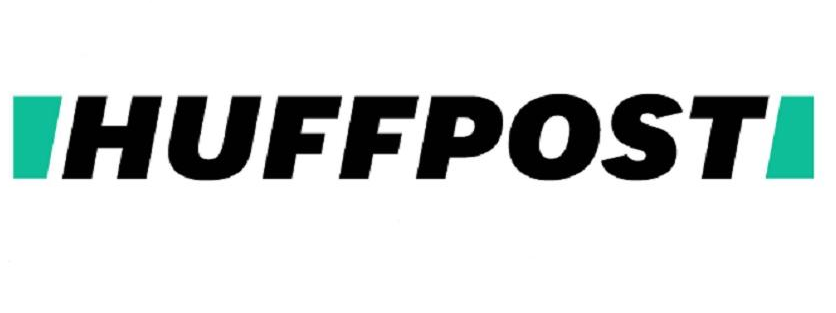
Renowned for its extensive array of news genres, HuffPost covers a wide spectrum, ranging from celebrity updates to global occurrences.
TechCrunch

Centered around trending subjects in technology, computing, and online culture, TechCrunch provides insights into the ever-evolving tech landscape.
Unique Considerations When Starting a News Blog
Just like starting a political or financial blog, a news blog comes with special considerations you ought to pay attention to.
I am bringing this up because some news blogs have gained a reputation for lacking credibility, possibly due to their association with tabloids or celebrity gossip platforms.
These blogs may have started out as tabloid or gossip platforms or adopted their style (using emotional or clickbait-style headlines) to attract higher traffic to their websites before later changing course and adopting a more formal tone.
On top of that, since you can incorporate your personal viewpoints or biases into your content, it gets murky when you are trying to be truthful.
If you want to be seen as a reliable news blog, keep an eye out for the following key elements:
- Purpose: What is the underlying motivation driving your articles?
- Accuracy: Is there substantial evidence supporting your articles’ claims?
- Authority: Are the sources you use reputable or trustworthy?
- Currency: How recent is the news story?
Ideally, your news blog should provide factual information even when you infuse it with your biases or use an informal tone.
Why You Should Start a News Blog
Starting a news blog can offer a multitude of benefits and opportunities. Here are several reasons why you should consider starting a news blog:
To Keep People Informed
News blogs provide a platform for sharing information, stories, and updates on current events, topics, and trends. By curating and delivering timely news content, you contribute to public awareness and informed discussions on important matters.
Whether it’s breaking news or lesser-known stories, your platform allows you to bring attention to important information that might otherwise go unnoticed. By sharing every story, you contribute to keeping people informed and engaged with the world around them.
Monetization Opportunities
News blogs can generate revenue through various monetization strategies, such as advertising, sponsored content, affiliate marketing, and premium subscriptions. As your blog gains traffic and influence, these avenues can potentially provide a source of income.
Flexibility and Control
Running a news blog gives you the freedom to choose the topics you cover, the writing style you employ, and the overall tone of your content.
You have creative control over your platform and can tailor it to your preferences.
Portfolio Building
As an aspiring journalist, writer, or content creator, a news blog serves as an excellent portfolio. It showcases your writing skills, reporting abilities, and dedication to staying informed about current events.
Awareness and Advocacy
A news blog allows you to raise awareness about social, environmental, or political issues that matter to you.
You can use your platform to advocate for change, share stories of impact, and mobilize your audience.
Learning and Growth
Researching, writing, and staying updated on news topics keeps you intellectually engaged and continuously learning.
It helps you develop critical thinking skills, improve your writing abilities, and expand your knowledge.
Networking and Collaboration
Running a news blog opens doors to networking opportunities and collaborations with fellow bloggers, journalists, experts, and thought leaders in your field.
These connections can lead to new insights and partnerships.
Working from Home or Remotely
As a news blogger, you can work from home or remotely as you travel. With the advancement of technology, it is now easier than ever to stay connected with sources, conduct research online, and publish content from anywhere in the world.
This allows you to have a flexible schedule and work in a comfortable environment. You don’t have to commute to an office (if you are averse to office politics) and you get to save both time and money.
You also get to spend more time with your family while still pursuing your passion for news blogging.
To Enhance Your Reputation
When you establish yourself as a reputable source of news, you can attract new readers and keep them coming back for more, and nothing is more fulfilling for someone working in the news industry.
Remember that gaining reputation takes time and effort, so be patient and continue delivering high-quality content that resonates with your target audience.
To further enhance your reputation, engage with your readers regularly. Responding to comments, addressing feedback, and encouraging discussion can help build a sense of community around your blog.
To Showcase Expertise
This is closely related to the previous point about gaining reputation.
If you have expertise in a particular field or industry, a news blog allows you to showcase your knowledge and insights.
It establishes you as a credible source of information, building your authority and reputation in your chosen niche.
How to Start a News Blog
Here are 8 steps to starting a news blog that you can eventually monetize:
Step 1: Identify Your Niche
Choosing your niche is a pivotal stage in starting a news blog. Your chosen subject matter will reflect the content you publish, influencing the kind of readership you attract.
Remember that tailoring your news blog toward specific subjects or sectors helps make it distinctive and draws individuals interested in those areas toward your content.
An identifiable niche also facilitates search engine optimization (SEO), ensuring more targeted traffic for your new blog posts from relevant readers keen on reading stories within their sphere of interest.
Follow your passion and expertise
Consider your interests and expertise when deciding on a topic area.
A passion for fashion might direct you to start a style news blog, while an interest in local events could inspire you to create a community-focused local news blog.

The range of potential niches is broad; however, ensure your choice aligns with both your knowledge base and personal inclinations.
Evaluate Your Target Audience
In addition to following your passion, understanding your target audience is a key step in starting a successful news blog.
Know who will be reading your content, and what interests them.
Find out the demographics such as age, location, occupation, and also their preferences – are they interested in political updates or sports events? Knowing this allows you to craft relevant stories that resonate with your readership.
Another aspect of evaluating your target audience is understanding how they consume news.
Do they prefer short bullet points or comprehensive articles? Are videos more engaging for them or do infographics catch their attention?
You must consider these preferences when producing news content for the blog.
Also, keeping track of trending news among your targeted group can help keep readers engaged and bring more traffic to your blog site. It’s about creating a personalized experience that keeps the audience coming back for more.
Step 2: Choose the Right Name
A descriptive and memorable name can attract readers and make your blog stand out from the other blogs.
Consider using words that are relevant to your niche and audience, as well as reflecting the tone and purpose of your blog.
Avoid complex or obscure names that may confuse or alienate potential readers.
Conduct thorough research to ensure that the name you choose is not already in use by another news blog or website.
Step 3: Choose a Blogging Platform
You need a platform that is easy to use, flexible, and reliable.
There are many options available, but I recommend using WordPress as your blogging platform.
WordPress is a popular content management system that powers over 40% of all websites on the internet.
It is easy to use, customizable and has a vast community of users and developers.
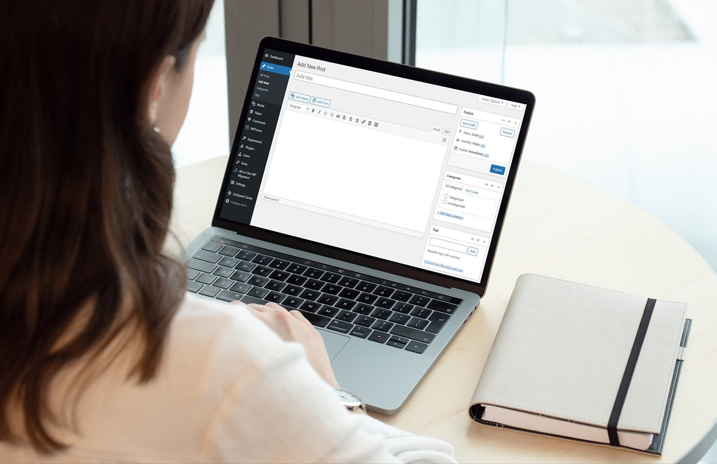
WordPress offers a range of features and plugins that allow you to create a professional-looking news blog without any coding skills.
To get started with WordPress, you will need to sign up for a web hosting account (in the next step) and install the WordPress software.
Most web hosting providers offer one-click installs for WordPress, making it easy to set up your blog.
Once you have installed WordPress, you can access your blog’s dashboard, where you can customize your blog’s appearance, create new posts, and manage your content.
One of the best things about WordPress is its flexibility. You can choose from thousands of free and paid themes to customize your blog’s appearance and functionality.
You can also install plugins to add new features and functionality to your blog. For example, you can install a plugin to add social sharing buttons to your posts or a plugin to improve your blog’s SEO.
Step 4: Choose a Web Host
A web host is a company that provides the technology and services needed for your website to be accessible on the Internet.
When choosing a web host, you should consider factors such as reliability, speed, security, customer support, and pricing since it accounts for a big chunk of the cost of starting your blog.
There are many web hosting providers available, each with its own strengths and weaknesses.
Some popular web hosting providers include Bluehost, SiteGround, and GreenGeeks.
I recommend choosing a web host that offers WordPress hosting, as WordPress is the most popular content management system (CMS) for blogs.
Step 5: Select a Domain Name
Once you have chosen a web host, the next step is to select a domain name. Your domain name is the address that people will use to access your blog.

When selecting a domain name, you should choose something that is easy to remember, relevant to your blog’s content, and available (ideally, it should be the same as your blog’s name)
If you don’t already have a domain name, many web hosting providers offer a free domain name with their hosting plans.
Alternatively, you can purchase a domain name from a domain registrar such as Namecheap or GoDaddy.
Step 6: Install WordPress
After you have chosen a web host and domain name, the next step is to install WordPress (assuming you decided yours will be a WordPress blog).
Most web hosting providers offer a one-click WordPress installation, making it easy to get started.
Once you have installed WordPress, you can start customizing your blog’s appearance and adding content.
There are many free and paid WordPress themes and plugins available that can help you create a professional-looking blog as we discussed above.
Step 7: Design Your Blog
Once you have set up your news blog, it is time to design it. A well-designed blog can attract more readers and keep them engaged.
In this section, we’ll discuss how to choose a theme and customize the design of your blog.
Choose a Theme
A blog theme is a pre-designed template that determines the look and feel of your blog. There are many blog themes available for free or for purchase.
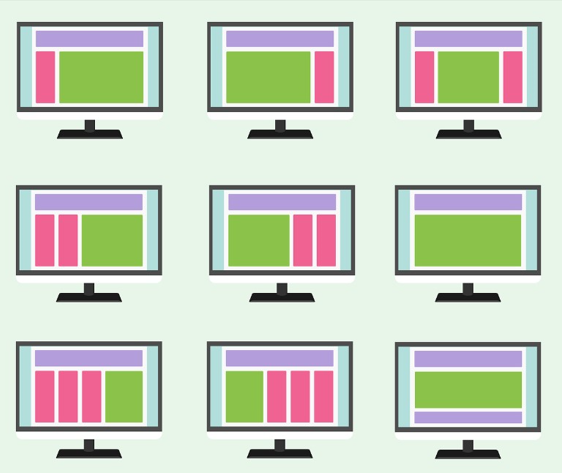
Here are some tips for choosing the right theme for your news blog:
- Choose a theme that is visually appealing and easy to read. Your readers should be able to navigate your blog easily and find the information they are looking for.
- Look for a theme that is responsive. A responsive theme adjusts the layout of your blog to fit the screen size of the device your readers are using. This is important because more and more people are accessing the internet on their mobile devices.
- Consider the functionality of the theme. Some themes come with built-in features like social media sharing buttons, contact forms, and custom widgets. Choose a theme that has the features you need to make your blog successful.
Customizing the Design
Once you have chosen a theme, it’s time to customize the design of your blog. Here are some tips for customizing your blog design:
- Customize the colors and fonts to match your brand. Use colors that are easy on the eyes and fonts that are easy to read.
- Add your logo to the header of your blog. Your logo should be prominently displayed on your blog to help build brand recognition.
- Keep your blog design simple and clean. Avoid cluttering your blog with too many elements that can distract your readers from your content.
In conclusion, designing your news blog is an important step in creating a successful blog. Choose a theme that is visually appealing, responsive, and has the features you need. Customize the design of your blog to match your brand and keep it simple and clean.
Step 8: Write Your First Blog Post
Starting a news blog can be exciting, but writing your first blog post can be intimidating.

Here are a few steps to guide you through the process:
Decide on a Topic
Before you start writing your first blog post, you need to decide on a topic. Your topic should be relevant to your niche and something that your readers will find interesting.
Once you have decided on your topic, it’s important to do some research. Look for other blog posts on the same topic to get an idea of what has already been covered and what you can add to the conversation.
Write the Post
When writing your post, be sure to write in your own words and use a conversational tone. This will help your readers connect with you and your content. Also, be sure to include any relevant images or videos to make your post more engaging.
Publish the Post
Once you have written your first blog post, it’s time to publish it. Before you hit the publish button, be sure to proofread your post for any errors or typos. You want to make sure that your post is well-written and error-free.
How to Create Compelling Content for a News Blog
The news business is unforgiving and if you cannot come up with good blog post ideas and create compelling content, you can fall away pretty easily. The best news blog sites are the ones that regularly produce quality content.
With that in mind, here are tips on how to create compelling content:
Write Captivating Headlines
Captivating headlines are crucial for a news blog to grab readers’ attention and entice them to click on your article.
Start by keeping your headline concise and informative, highlighting the main point of the story.
Use strong action verbs and power words to make your headline more engaging.
Make sure it accurately reflects the content of your article, as misleading headlines can harm your credibility.
Avoid leaning too heavily on clickbait headlines because they can make you lose trust and credibility.
Clickbait headlines are designed to attract clicks by creating sensational or exaggerated promises that often don’t deliver on the actual content. When readers click on such headlines and find that the content doesn’t live up to their expectations, they feel misled and disappointed.
Clickbait headlines can damage your blog’s reputation as readers begin to associate your content with dishonesty.
This can result in a loss of trust, making readers hesitant to engage with your future content or share it with others. Over time, this erosion of trust can lead to a decline in your blog’s readership and a negative impact on your overall brand image.
Present the Facts
A news blog should always prioritize presenting facts to its readers.
At a time when disinformation and misinformation are rife, when you report the facts, you will do well.
When writing articles, it is crucial to start with the most important information and avoid any unnecessary fluff.
By providing accurate and reliable information, you establish credibility as a news blogger. Use clear and concise language, and make sure your facts are well-researched before publishing them.
Presenting facts in a straightforward manner helps readers stay informed without feeling overwhelmed or confused by unnecessary details. Remember, the goal is to establish yourself as a reputable source of news information.
Use Active Tense
Active tense helps to engage readers and make the writing more dynamic.
When you use active tense, it creates a sense of immediacy and makes the information feel more current and relevant.
This is especially important in news blogging because you want your readers to feel like they are getting the latest updates and breaking stories.
On top of that, using active tense also allows you to present facts in a clear and concise manner, making it easier for readers to understand the information being presented.
When you avoid being passive and opt for active verb forms, you can ensure that your news blog posts are engaging, informative, and easy to follow.
Avoid Jargon
You have to avoid jargon to ensure that readers can easily understand the information you are presenting. Jargon usually shows up on other types of blogs such as photography, sports, and fashion blogs.
Jargon can show up in news blogging in a number of ways:
- Acronyms and Initialisms: Using acronyms or initialisms without proper explanation can confuse readers. For instance, using “UNESCO” without clarifying that it stands for the United Nations Educational, Scientific and Cultural Organization.
- Technical Terms: News articles might include technical terms specific to industries such as finance, law, or science. For example, using “quantitative easing” without explaining its meaning in simpler terms.
- Insider Language: Using terminology known only to those deeply involved in a particular field or subject can alienate general readers. For instance, using “inside-the-beltway” to describe political matters in Washington D.C.
- Buzzwords: Overusing trendy buzzwords like “synergy” or “disruption” without proper context can make the content seem vague or insincere.
- Legal Jargon: Legal terms and phrases might be hard to understand for readers without a legal background. Examples include “voir dire” or “amicus curiae.”
To avoid jargon as you write, define technical terms or acronyms the first time they appear in an article, followed by a clear explanation and always use simple and straightforward language that most readers can easily understand.
If your article is about something technical that some of your readers may have trouble understanding, use analogies to explain complex concepts by comparing them to more familiar ones.
When you keep your content free from confusing jargon, you can effectively convey important news stories in a manner that is accessible and engaging to a wide range of readers.
Conduct Thorough Research
This one ties in with the point I made about reporting facts whereby thoroughly researching your topics ensures that your articles are accurate, up-to-date, and reliable.

Start by gathering information from multiple credible sources such as news websites, official reports, and expert interviews.
Take the time to fact-check and verify any statistics or claims before including them in your blog posts.
Additionally, stay current with the latest developments in your niche by following relevant news sources and subscribing to industry newsletters.
This will help you provide fresh and informative content that keeps your readers engaged and coming back for more.
How to Optimize Your News Blog for Search Engines
If you want your news blog to be successful, you have to optimize it for search engines.
This process is known as search engine optimization (SEO), and it involves making your blog more visible in search engine results pages (SERPs).
In this section, we’ll cover the basics of SEO and how to implement on-page SEO strategies to improve your blog’s search engine ranking.
Use SEO
Search Engine Optimization (SEO) is the process of optimizing your website or blog to rank higher in search engine results pages (SERPs).
The goal of SEO is to increase the quantity and quality of traffic to your website through organic search engine results.

Although all blogs use SEO, it holds greater significance for news blogs, particularly in the face of competition from other news blogs as well as established news outlets for audience attention.
You must use effective SEO practices with keywords playing a pivotal role. For example, you can integrate words that resonate with your audience’s search queries, such as “important news today,” “latest breaking news,” or, if your news blog has a regional focus, incorporate the city’s name you’re covering, such as “Important London news updates.”
There are two primary types of SEO: on-page and off-page.
On-page SEO involves optimizing the content and structure of your website or blog. This includes optimizing your headlines, meta descriptions, and content for specific keywords.
Off-page SEO, on the other hand, involves optimizing your website’s reputation and authority through link-building and other external factors.
Let’s address each of them in greater detail as well as how you can implement them in your blog:
Implementing On-Page SEO
On-page SEO is the foundation of any successful SEO strategy.
Here are some tips for implementing on-page SEO on your news blog:
- Conduct keyword research: Before you start writing your blog posts, it’s essential to research the keywords that your target audience is searching for. Use tools like Google Keyword Planner or SEMrush to find relevant keywords that have high search volume and low competition.
- Optimize your headlines: Your headlines are the first thing that readers will see when they come across your blog post in search engine results. Make sure your headlines are clear, concise, and contain your target keywords.
- Use meta descriptions: Meta descriptions are the short blurbs that appear below your headlines in search engine results.
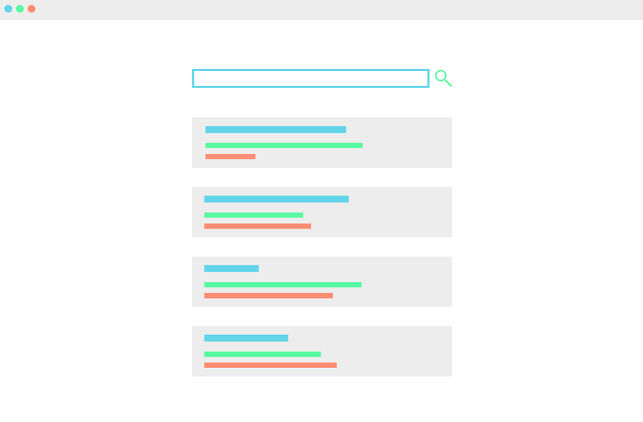 Make sure your meta descriptions accurately describe your blog post’s content and include your target keywords.
Make sure your meta descriptions accurately describe your blog post’s content and include your target keywords. - Optimize your content: When writing your blog posts, make sure to include your target keywords throughout your content. However, don’t overdo it – keyword stuffing can hurt your search engine ranking. Instead, focus on creating high-quality, engaging content that provides value to your readers.
By implementing these on-page SEO strategies, you can improve your news blog’s search engine ranking and attract more organic traffic to your website.
Implementing Off-Page SEO
Implementing off-page SEO is essential for enhancing your blog’s online visibility and authority through external factors.
Off-page SEO refers to strategies and techniques that occur outside of your website itself but have a significant impact on its search engine rankings and overall reputation.
Here are steps to effectively implement off-page SEO:
- Build High-Quality Backlinks: Backlinks from authoritative and relevant websites are a cornerstone of off-page SEO. Focus on obtaining natural and high-quality backlinks by creating valuable and shareable content. Reach out to industry influencers, bloggers, and websites to request guest posts, collaborations, or mentions that link back to your website.
- Guest Blogging: Contributing guest posts to reputable news websites and blogs can establish you as an industry expert and build backlinks. Write high-quality, informative content and include a link back to your website in the author’s bio or within the article content where relevant.
- Social Media Engagement: Active participation on social media platforms helps build your brand’s online presence and encourages engagement. Share your content, interact with followers, and connect with industry influencers. Social signals, such as likes, shares, and comments, indirectly impact your search rankings.
- Influencer Outreach: Collaborate with influencers and thought leaders in the news industry to gain exposure to their audiences. Influencers can share your content, mention your brand, or even link to your blog, boosting your authority and visibility.
- Content Marketing: Creating high-quality, valuable content attracts organic links and engagement. Publish informative news pieces, infographics, videos, and other shareable content that resonates with your target audience. When others find your content valuable, they’re more likely to link to it and share it.
- Online PR and Brand Mentions: Monitor your brand mentions across the internet. Whenever your brand is mentioned without a link, reach out to the publisher and kindly request a link back to your website. This helps you control your brand’s online reputation and improves your backlink profile.
- Forum and Community Participation: Engage in industry-related forums and online communities. Provide insightful answers, share your expertise, and include a link to your blog in your forum signature, if allowed.
- Broken Link Building: When you find broken or outdated links on reputable news websites, you can offer to replace them with links to your relevant and high-quality content.
- Monitor and Analyze: Regularly monitor your backlink profile, track your rankings, and analyze your off-page SEO efforts’ effectiveness. Tools like Google Search Console, Ahrefs, and Moz can provide valuable insights.
Remember that off-page SEO is an ongoing process that requires consistent effort and adaptation to industry trends. Balancing off-page and on-page SEO is crucial for a comprehensive and successful search engine optimization strategy.
Other Ways to Grow Your Blog Audience
If you want your news blog to succeed, you need to grow your audience in other ways besides optimizing for search engines.
Here are some tips to help you maintain your audience and attract more readers.
Use Social Media
Using social media to promote a news blog can be an effective way to reach a broader audience, engage readers, and drive traffic to your content.

Here’s a how to leverage social media:
- Choose the social media platforms that align with your target audience and the nature of your news content. For breaking news and timely updates, platforms like X (formerly known as Twitter) can be valuable due to their real-time nature. Facebook is ideal for sharing in-depth articles, feature stories, and engaging visuals although X is also venturing into that with a premium account. Instagram is great for visually appealing content and behind-the-scenes glimpses. LinkedIn can be useful for reaching a professional audience interested in industry insights and analysis. Research your audience’s preferences and behaviors to determine the platforms where they are most active.
- Tailor your posts to the social media platforms: Create a diverse range of content tailored to each social media platform. Share snippets, headlines, and intriguing quotes from your articles to entice users to click through to your blog.
- Use vivid imagery: Visuals play a crucial role in capturing attention, so use compelling images, infographics, and videos that resonate with your target audience.
- Be consistent: Maintain a consistent posting schedule to keep your audience engaged and informed. Consider using social media management tools to schedule posts in advance and maintain a steady presence.
- Engagement and Interaction: Social media is a two-way communication channel, so actively engage with your audience. Respond to comments, answer questions, and encourage discussions related to your news content. Consider hosting live sessions, Q&A sessions, or webinars to foster deeper connections with your audience. Share user-generated content, such as reader testimonials or submissions to create a sense of community around your news blog.
- Pay attention to trending topics: Use relevant hashtags to increase your content’s discoverability and participate in trending conversations.
- Collaborate with influencers: Collaborate with influencers or other authoritative figures in your industry to expand your reach and credibility.
Remember that social media success requires patience and a data-driven approach. Regularly analyze metrics like engagement rates, click-through rates, and audience growth to assess the effectiveness of your social media strategies.
Based on the insights you gather, refine your content strategy, posting schedule, and engagement tactics to continuously improve your news blog’s presence on social media platforms.
Use Paid Advertising
Promoting a news blog through paid advertising on Google and social media platforms can significantly boost its visibility and attract a wider audience. With platforms like Google Display Network, you can display your blog’s ads on relevant websites and news portals, expanding your reach beyond your blog’s audience.
Here’s how to effectively use paid ads to promote your news blog:
- Targeted Ad Campaigns: To promote your news blog with paid ads, start by defining your target audience. Identify the demographics, interests, and online behaviors of your ideal readers. Platforms like Google Ads and social media platforms offer powerful targeting options that allow you to reach the right people. Implement relevant keywords and use location targeting to reach users in specific geographic areas if your content is region-specific.
- Leverage Social Media Advertising: Social media platforms like Facebook, Instagram, X (Twitter), and LinkedIn offer advertising formats to promote your news blog effectively. Create engaging ad campaigns that align with each platform’s strengths.
- Remarketing and Content Promotion: An effective paid advertising strategy for news blogs involves remarketing to users who have previously visited your website. Use retargeting ads to remind users about your blog’s value and the types of content they can find there.
- Additionally, consider promoting specific high-quality articles through paid ads. Identify evergreen or timely pieces that have the potential to attract readers’ attention and offer unique insights.
Incorporating paid advertising into your news blog promotion strategy requires careful planning, continuous monitoring, and optimization based on performance metrics.
As you allocate your budget and experiment with different ad formats and targeting options, analyze the data to determine which campaigns are driving the highest engagement, traffic, and conversions.
Adjust your approach based on these insights to refine your strategy and maximize the impact of your paid ad campaigns.
Collaborate with Others
Collaborating with others is a key strategy for promoting and growing your news blog. By forming partnerships with other bloggers, journalists, or industry experts, you can expand your reach and attract new readers to your site.

Collaborations can take many forms, such as guest posting on each other’s blogs, co-creating content or conducting interviews together. Working together allows you to tap into the strengths and expertise of others in order to produce high-quality content that appeals to a wider audience.
Additionally, collaborating with others can help increase engagement on your blog through sharing each other’s posts and participating in discussions sparked by shared content.
This collaboration not only enhances the value of your blog but also fosters a sense of community within the blogging world as you work towards common goals – providing informative and engaging news content to readers everywhere.
Encourage Discussion and Engagement
Encouraging discussion and engagement is a key aspect of running a successful news blog. By creating an environment where readers feel comfortable sharing their thoughts and opinions, you can foster a sense of community and keep your audience engaged.
One effective way to do this is by ending each blog post with a thought-provoking question or statement that encourages readers to leave comments and start discussions.
Additionally, actively responding to comments and engaging in conversations with your readers shows them that their input is valued, which can lead to increased loyalty and return visits.
How to Monetize a News Blog
Once you have started your news blog, you need to find ways to monetize it.
There are several ways to make money from your blog:
Advertising
When I think of advertising, there are two ways you can approach this:
Using an Ad Network (Let’s Focus on Google AdSense)
Google AdSense is a popular way to monetize your blog. With AdSense, you can display ads on your blog and earn money when visitors click on them.
To get started with AdSense, sign up for an account and add the ad code to your blog.
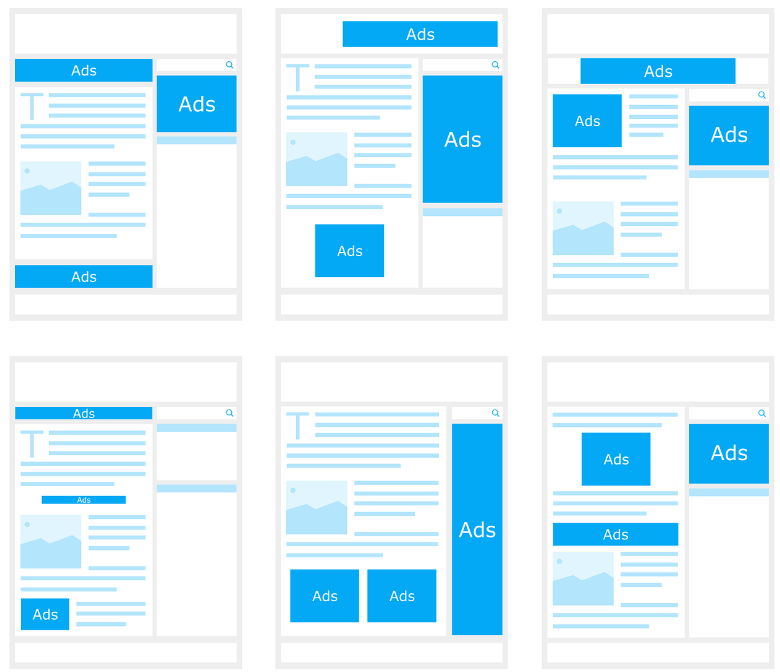
Google will then display ads that are relevant to your content, and you will earn money when visitors click on them. Google takes care of everything, including finding advertisers and displaying the ads.
There are two kinds of ads that Google offers you:
- Auto Ads: Google decides what ads to show and how the ads look on your blog.
- Ad Units: Google lets you pick the ads you want to be placed on your blog (so you can match the look and feel of your blog) as well as where you want the ads to be placed.
One of the benefits of using AdSense is that it is easy to set up and manage.
Besides Google AdSense, there are other ad networks that connect you with advertisers and handle the selling and placement of ads. Some popular alternatives include Media.net and BuySellAds.
Selling Ad Space Directly
Another way to monetize your blog is by selling ad space directly. You can sell ad space directly to advertisers or without using an ad network (like Google AdSense above).
To sell ad space directly, you need to reach out to potential advertisers and negotiate rates with them.
You need to have information about your audience and traffic to show to your prospective advertisers to show them that they will get value for their money if they advertise with you.
When selling ad space, it is important to consider your audience and the types of ads that would be a good fit for your blog. You also need to make sure that the ads are not intrusive and do not negatively impact the user experience.
Affiliate Marketing
Affiliate marketing is another popular way to monetize your blog. With affiliate marketing, you promote products or services on your blog and earn a commission when visitors make a purchase through your affiliate link.
To get started with affiliate marketing, you need to sign up for an affiliate program and add affiliate links to your blog.
One of the benefits of affiliate marketing is that you can promote products that are relevant to your audience and that you believe in. You can also earn a commission on each sale, which can be a great way to earn passive income.
When promoting affiliate products, it is important to be transparent and disclose that you are using affiliate links.
You also need to make sure that the products you promote are high-quality and relevant to your audience.
Sponsored Posts
Sponsored blog posts are special posts where external parties pay you to publish content that promotes their products, services, or brands.
These posts are designed to seamlessly integrate within your platform, mimicking your blog’s style and tone while delivering the advertiser’s message. Essentially, sponsored blog posts enable businesses to tap into your established audience and credibility to expand their reach and engagement.
In a sponsored blog post arrangement, you may either receive pre-written content from advertisers or craft the posts yourself based on the provided guidelines.
You have to label these posts as “sponsored” or “paid” to maintain transparency and inform readers that the content is promotional in nature.
Sponsored posts provide an additional revenue stream, allowing you to monetize your platform and continue creating valuable content for your readers. However, maintaining the balance between sponsored and organic content is crucial to preserving the trust and credibility that you have established with your audience over time.
Set up a Paywall
Implementing a paywall for your news blog can be a strategic move to monetize your content and sustain your journalistic endeavors.
A paywall is essentially a digital barrier that limits access to certain articles or sections of your news website, requiring readers to subscribe or pay a fee to access premium content.
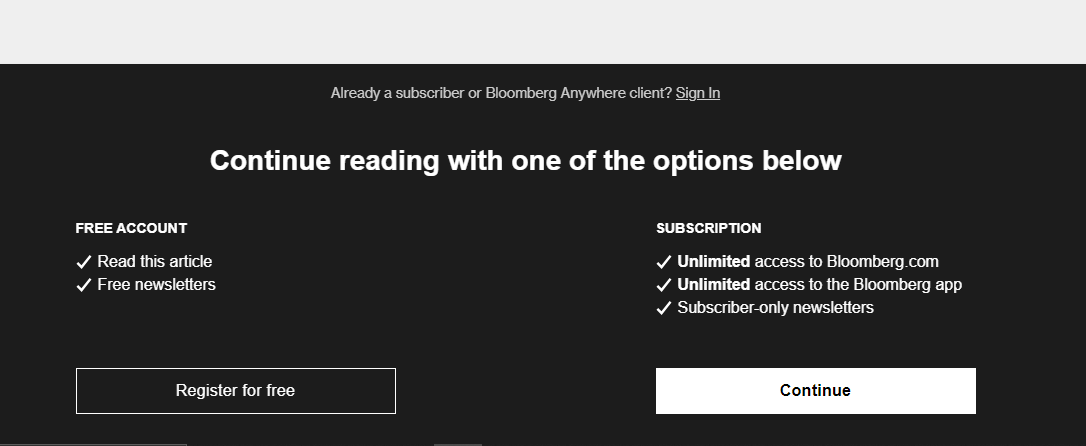
Setting up an effective paywall involves careful planning and consideration of various factors to strike the right balance between generating revenue and maintaining audience engagement.
To start, it’s important to determine the type of paywall model that aligns with your news blog’s goals.
There are several approaches to consider: a hard paywall, which restricts access to all content until a subscription is purchased; a metered paywall, allowing readers to access a limited number of articles for free before prompting them to subscribe; and a freemium model, where a mix of free and premium content is available, enticing readers to upgrade for exclusive content.
Each model has its own implications for user experience, content distribution, and revenue generation, so carefully assess which suits your audience and content strategy best.
Technical implementation is another crucial step in setting up a paywall.
You’ll need to invest in a reliable content management system (CMS) or subscription platform that supports paywall functionality.
You need to inform your readers about the value they’ll gain from a subscription is essential. Offer previews of premium content, highlight exclusive features, and emphasize the importance of supporting independent journalism.
You have to stick to the right balance of free and paid content to maintain reader engagement while incentivizing subscriptions.
Additionally, regularly analyze user data and feedback to refine your paywall strategy and optimize the user experience, ensuring that the paywall aligns with your news blog’s mission while generating sustainable revenue for quality journalism.
Keeping Your News Blog Up-to-Date
As a news blogger, keeping your blog up-to-date is crucial to maintaining your readership. Your readers want to stay informed about the latest news and events, so it’s important to provide them with fresh content on a regular basis.
Here are some tips to help you keep your news blog up-to-date:
Follow Breaking News
One of the best ways to keep your news blog up-to-date is to follow breaking news. This means staying on top of the latest news stories as they happen and reporting on them as quickly as possible.

You can do this by setting up alerts for breaking news from reliable sources, such as news agencies and reputable news websites.
Publish News Articles Regularly
To keep your blog up-to-date, you need to publish news articles regularly. This means posting new articles on a daily or weekly basis, depending on your niche and the type of news you cover. Make sure you have a schedule in place and stick to it. You can use a content calendar to plan your posts in advance and ensure you don’t miss any important news stories.
Cover Trending News
Trending news stories are a great way to keep your blog up-to-date and attract new readers. These are stories that are currently popular and being talked about on social media and other news outlets. Keep an eye on what’s trending and try to cover these stories in a timely manner.
Stay Current
Staying current means keeping up with the latest news and events in your niche. This means reading other news blogs and websites, following relevant social media accounts, and attending events and conferences related to your niche. By staying current, you can ensure that your blog is always up-to-date and providing your readers with the latest news and information.
Conclusion
Starting a news blog can be a challenging but rewarding experience. By following the tips and strategies outlined in this article, you can increase your chances of creating a successful blog that attracts readers and generates revenue.
Remember, a successful blog requires a strong foundation, a clear niche, and consistent, high-quality content. You should also focus on building relationships with your readers and promoting your blog through social media and other channels.
While many blogs fail, there are also many successful blogs out there. By learning from the mistakes of others and implementing proven strategies, you can increase your chances of creating a blog that stands out from the crowd.
So what are you waiting for? Start your news blog today and begin sharing your unique perspective with the world!

